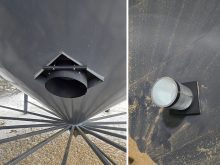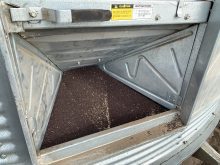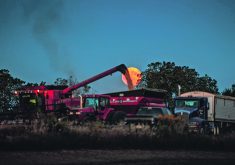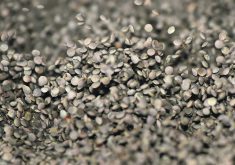A lot is said in the marketing world about “commercial grade” pickups and more recently “commercial grade” grain bins. Is it real or just hype?
“I think for pick-up trucks, it’s really more of a marketing term aimed at business owners who want an industrial image,” said Harvey Kuhar, owner of Farm West Bins in Regina.
“When we use the term ‘commercial grade’ in our business, it’s our criteria that meets an engineering standard for strength and safety. It means a qualified engineer de-signed the bin and signed off on the plan.”
Read Also

U.S. bill could keep out Canadian truckers
The Protecting America’s Roads Act, which was tabled in the U.S. House of Representatives at the beginning of October, would “rid the country of illegal immigrant commercial truck drivers and ineligible foreign nationals.”
Kuhar said engineers have been pushing for legislation on minimum standards for bins since the 1970s, but provincial governments on the Prairies have ignored the issue.
“There is no actual regulation that stipulates a specific minimum safety or quality standard for bins,” he said.
“As bins get bigger, the risk of collapse increases exponentially. That’s why we see more bin failures today. I think the insurance companies will catch on to the quality issue and the lack of standards. They’ll get tired of writing those big cheques for bin failures that could have been prevented. Then we’ll see some changes.”
Some bin failures can occur when producers fail to put down a good gravel base, he added, but that’s less of a problem today as farmers realize what’s needed to support the weight of a full bin.
Farm West uses the term commercial grade for good reason, said Kuhar. Prairie Steel, the manufacturer of Farm West bins, sets a grade standard which must be met by steel suppliers.
“Flawed or blemished steel is rejected. That steel can cause a failure or collapse,” he said.
“We use heavier structural steel in the walls and heavier hopper legs with the pads welded on.”
Kuhar said the optional Max Float circular skid has a larger footprint than competitors’ skids, along with the lowest pressure to the ground in the industry.
“We’re the only company with a circular skid,” he said.
“The big reason for this is we get uniform weight distribution over a much larger footprint. A bin on a circular skid is more stable than a bin on an octagon.”
Farm West hopper cones have double welded seams, with full length welds on the inside and outside of each seam.
“Most hoppers are typically welded on the inside only. Some companies cut corners even further. They do a stitch weld, which means there are gaps in the seam. It’s not a solid bead.
“The hopper cone carries the full weight of the product plus the bin itself. A hopper is like a chain. It’s only as strong as its weakest weld.”
The inside of the hoppers is coated with a hard surface poly urethane paint. The 22 inch slide gate has a remote crank.
“We extend a crank out to the exterior edge of the bin. There are two sprockets with a chain. You crank the wheel to open and close the slide gate,” he said.
“You’re always out on the perimeter of the bin and you’re standing, so you see exactly what’s going on. The mechanics of it make it very easy to regulate opening and closing of the gate.”
A double band holds the walls to the top of the cone. The inside band is similar to the band on any hopper bottom bin. It secures the walls to the cone. The outside band is much larger and is formed to snugly fit over the first band.
“The result is an extremely rigid fit,” he said. “With a conventional single band, a little bit of settling or ground movement can cause the cone to flex and loosen the band.
A flexing hopper or loose band potentially leads to hopper failure and the bin ripping apart. Double bands solve that.”
Flat bottom bins from Farm West have the Max Floor structural truss style floor system.
Instead of a single layer sheet of steel for the floor, it uses trusses that are similar to structural floor joists in a house.
“We start with the same basic design as our hopper bottom skid,” he said. “That fits inside the bottom. We put extra trusses or joists in through the middle to support the weight of the grain. Once all this is welded firmly in place, then we lay another sheet of steel over the joists and weld it. This is the floor the grain sits on.”
The depth of the crawl space is four inches on the smaller bins and six inches on larger bins.
“You won’t get any flex with this structure.”
He said the crawl space is too small for aeration, but an aeration system can be installed on the top of the Max Flow floor.
“I prefer a totally sealed eave (system) because it gives the farmer more control over the environment within the bin. It lets the farmer determine when and where the air moves. With open eaves, you don’t have that control.”
He said open eaves also let insects and birds into the grain. In extremely humid weather, all the moisture farmers have been trying to eliminate comes back in through the eaves.
Kuhar said all the additional engineering means his granaries cost more than those of many of his competitors.
“I sell what I believe is a higher quality product, so there’s more cost involved,” he said.
“I think farmers are gradually starting to understand that the payback comes with a longer lasting bin.”
For more information, contact Harvey Kuhar at 306-789-0606 or visit www.farmwestbins.com.


















